Wedge-tailed Eagles, Whistling Kites, Black-shouldered Kites, Brown Falcons, a Collared Sparrowhawk and a Brown Goshawk – what a raptorous week! My images of the eagles and kites are hopeless but the falcon, sparrowhawk and robin-eating goshawk were not in flight, two of them were perched right outside my kitchen window. If only I could train soaring raptors to keep circling while I test camera settings, instead I’m busy checking deplorable images while they are busy disappearing.
The Brown Falcon was perched at the top of a bush overlooking a paddock and a narrow country road: this is a typical perch as they can see critters in the grass and attempting to cross the road. The falcon’s stood out despite the relatively poor light. We did a quick u-turn and crept nearer until I was close enough to capture this image when the sunlight flickered for a moment.
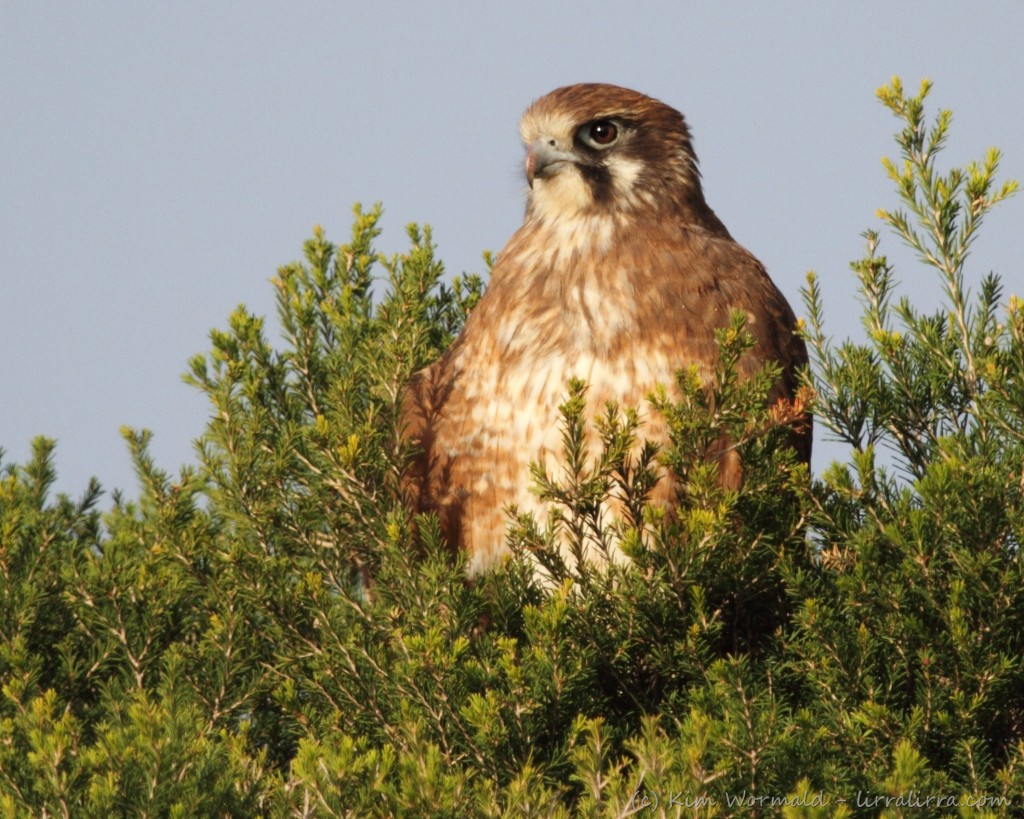 Brown Falcon (Falco berigora) – Falcons catch prey with their talons before crushing spines with their powerful bills.
Brown Falcon (Falco berigora) – Falcons catch prey with their talons before crushing spines with their powerful bills.
 Brown Falcon – this profile shows the powerful bill, hooked and blood-stained.
Brown Falcon – this profile shows the powerful bill, hooked and blood-stained.
I was thrilled to see a Collared Sparrowhawk land at the edge of our patch of bushland. It stayed long enough for me to grab my camera and take a few quick shots through the kitchen window. Photographing through windows is not best practice but by a happy coincidence they had just been cleaned.
Collared Sparrowhawk (male) (Accipiter cirrocephalus)
Collared Sparrowhawk (male)
Not long after photographing the sparrowhawk I saw a goshawk swoop across the grass and into the bush. Once I watched a goshawk circling amongst the swamp paperbarks, moving from treetop to treetop. The little bush birds were shrieking with alarm and frantically flying in their brave attempt to scare him away. The goshawk circled for forty-five minutes before descending on a New Holland Honeyeater nest and stealing a nestling: the bush suddenly went silent. This time he was quicker, returning immediately and landing on the same perch used by the sparrowhawk. He had an Eastern Yellow Robin dangling from his talons. I can’t help wondering if it’s the same robin that featured in First day photos. I wish they preferred the taste of Common Mynas.
Identifying the Collared Sparrowhawk and Brown Goshawk was difficult as adults and juveniles from both species are remarkably alike. Diagnostic criteria include the bird’s expression, tail notching and the length of the middle toe. I sent several images to Ken, a birding friend, and I am grateful for his experienced opinions.
This sequence of images was taken through the window in poor light so I apologise for the lack of clarity. I feel like leaving my door ajar, just wide enough for the lens, regardless of the weather in case either the sparrowhawk or goshawk come back.
Brown Goshawk (juvenile) (Accipiter fasciastus), Eastern Yellow Robin (Eospsaltria australis)
It’s a shame this friendly little robin ended up on the menu; at least it was taken by a raptor rather than a feral fox or cat.
Brown Goshawk – tucking in.
Brown Goshawk – Already there is little left that is identifiably robin, apart from fallen feathers.
Brown Goshawk – It knew I was watching; I’m glad I’m not a little bush bird.
Brown Goshawk -It cleaned its bill by wiping it back and forth on the perch, then picked shreds of robin from its feet .
Brown Goshawk – It had a post-lunch preen before flying back into the bush, hopefully not looking for dessert.
The perch used by the Collared Sparrowhawk and the Brown Goshawk is part of a small tree that died during the fourteen year drought that began in the mid 1990s. It has a microbat roosting box attached so I didn’t remove it when cleaning up the edge of the bushland ahead of the bushfire season. Dead trees are important for our wildlife in so many ways, this tree isn’t big enough to have hollows but it’s a great raptor perch.
Incidentally, I don’t think the bat roosting box has ever been used; bats prefer roosting in the roofspace of the house, gaining access via the rounded gaps where the corrugated iron roof meets the verandah. I love watching them swoop over my head on warm summer evenings but not everyone shares the pleasure.
Happy birding, Kim

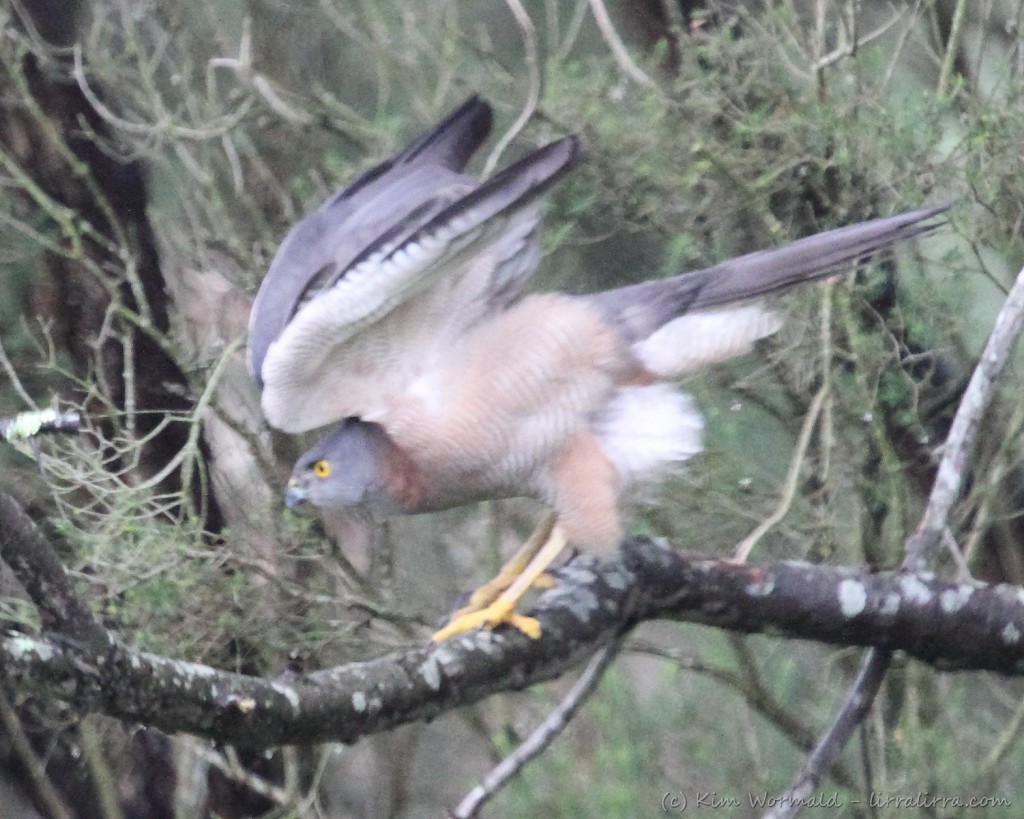
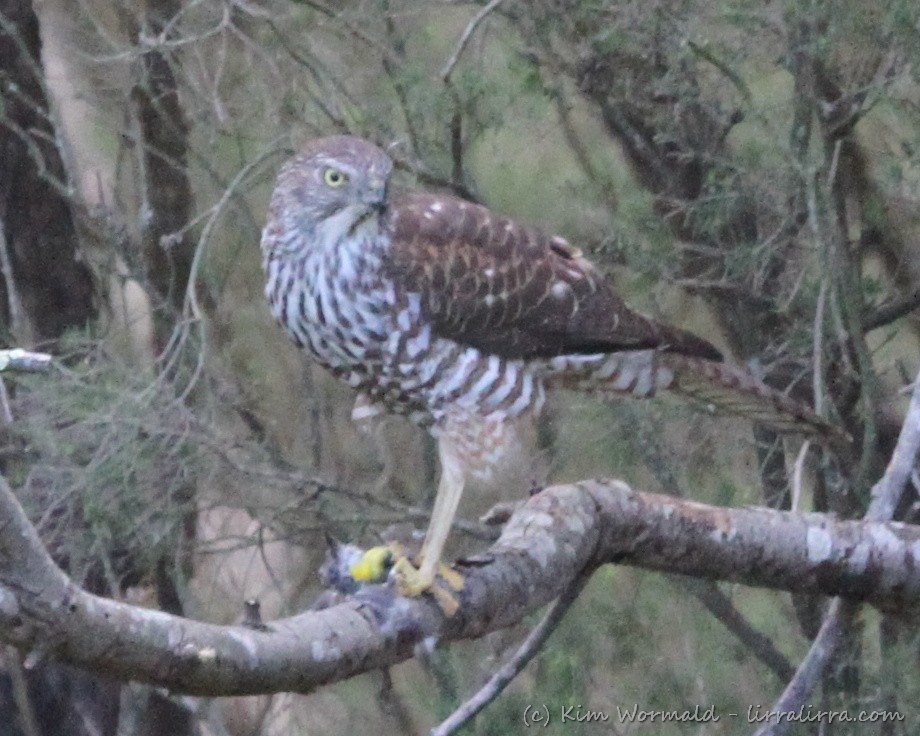
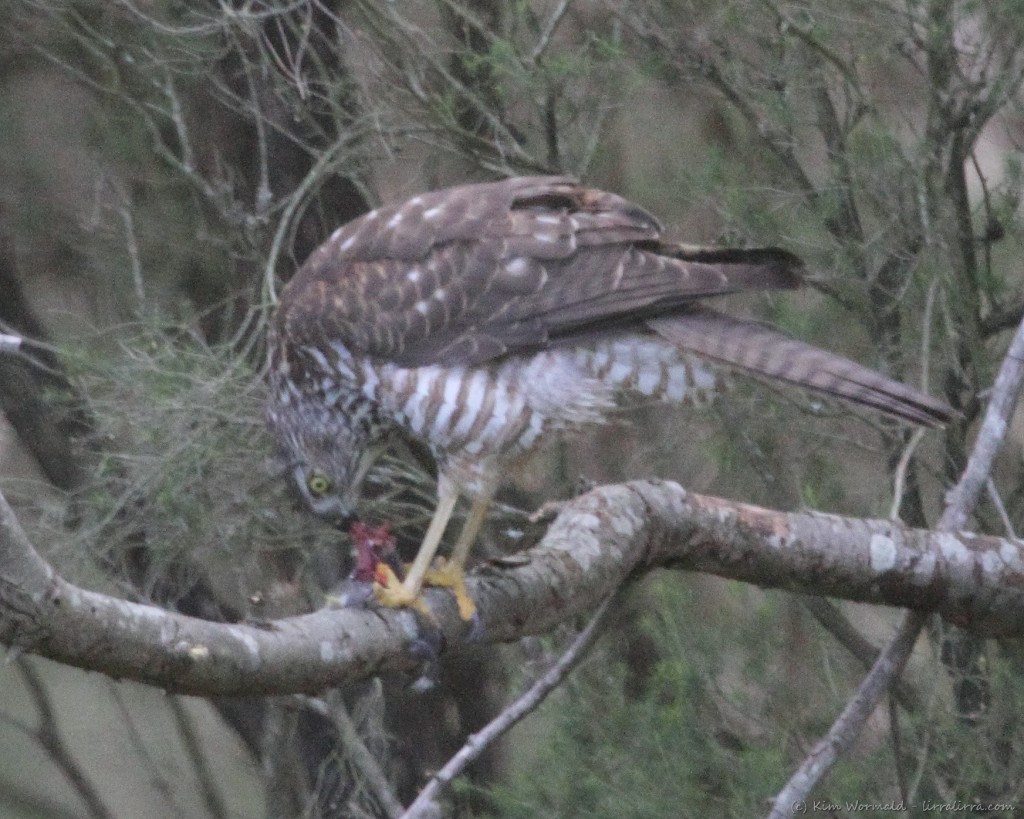
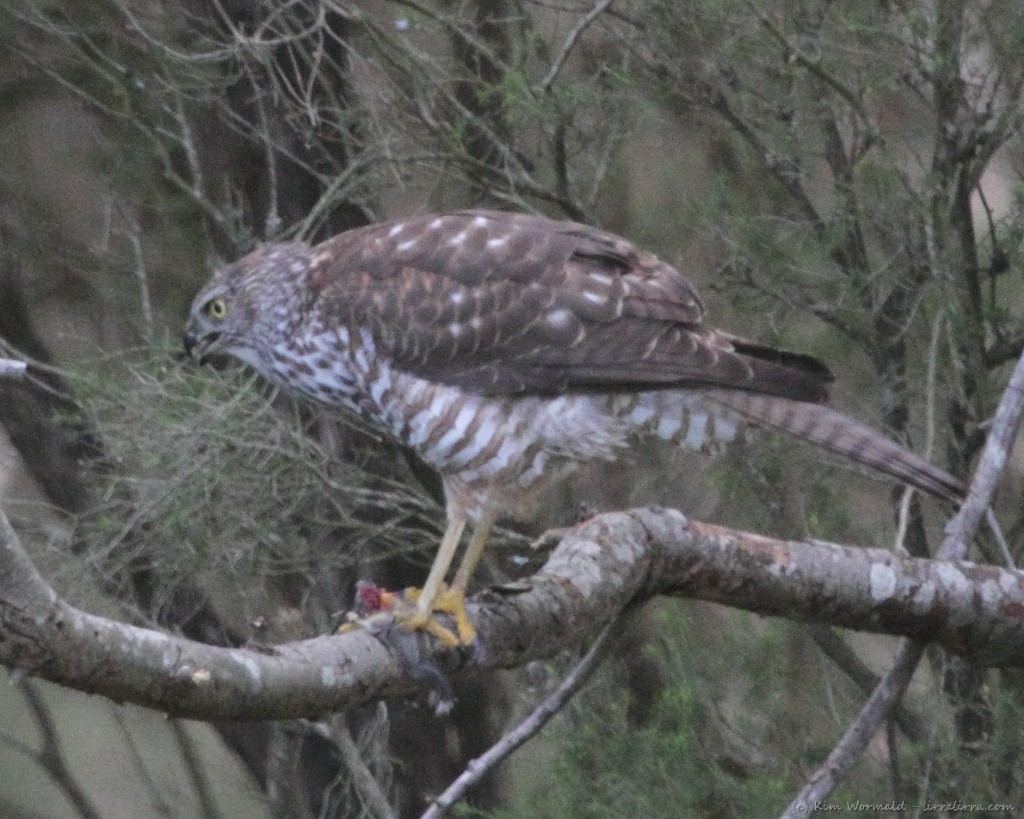
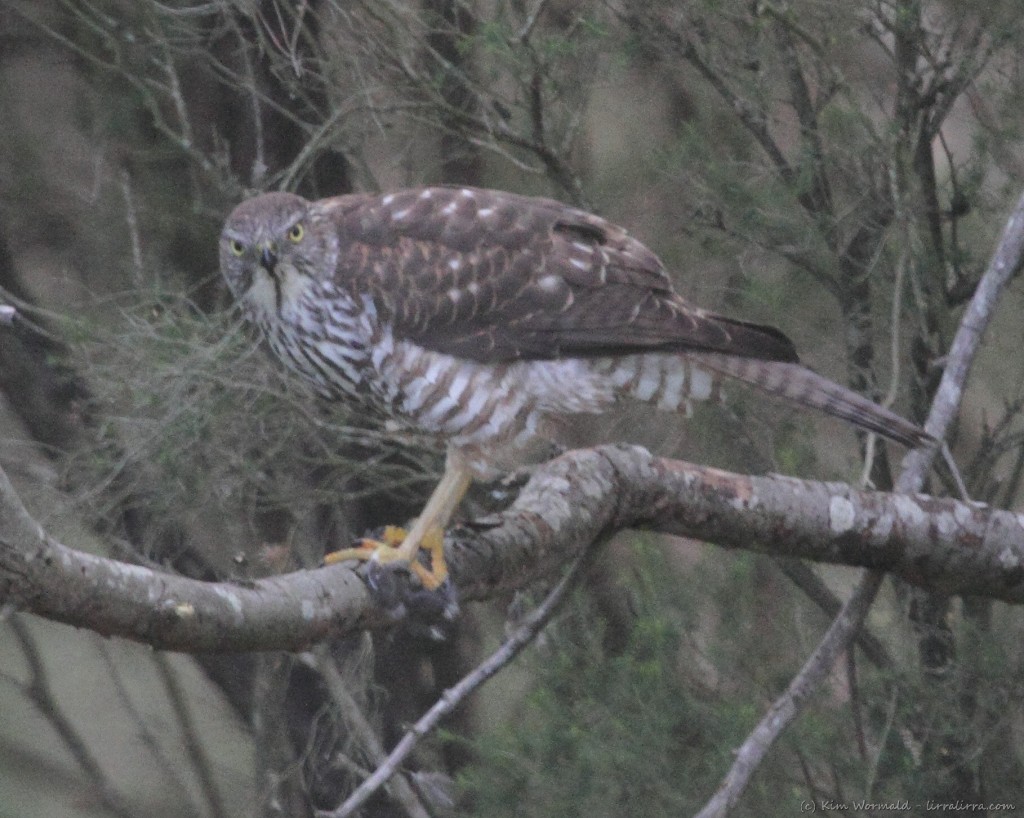
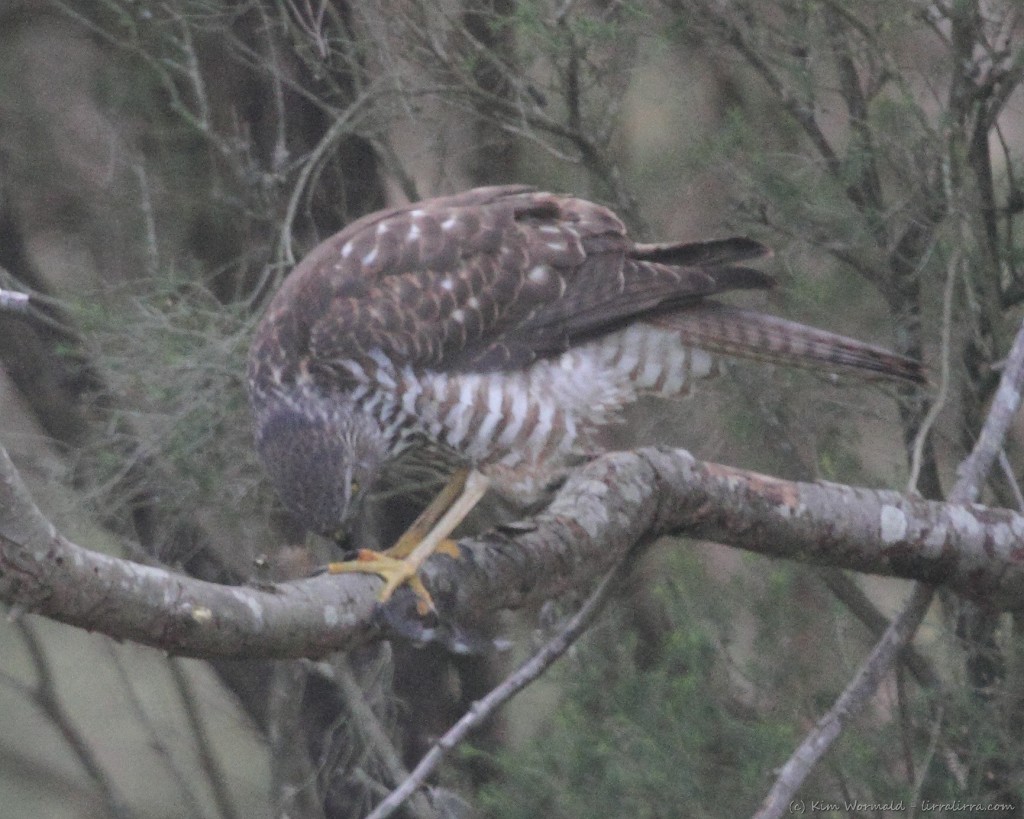
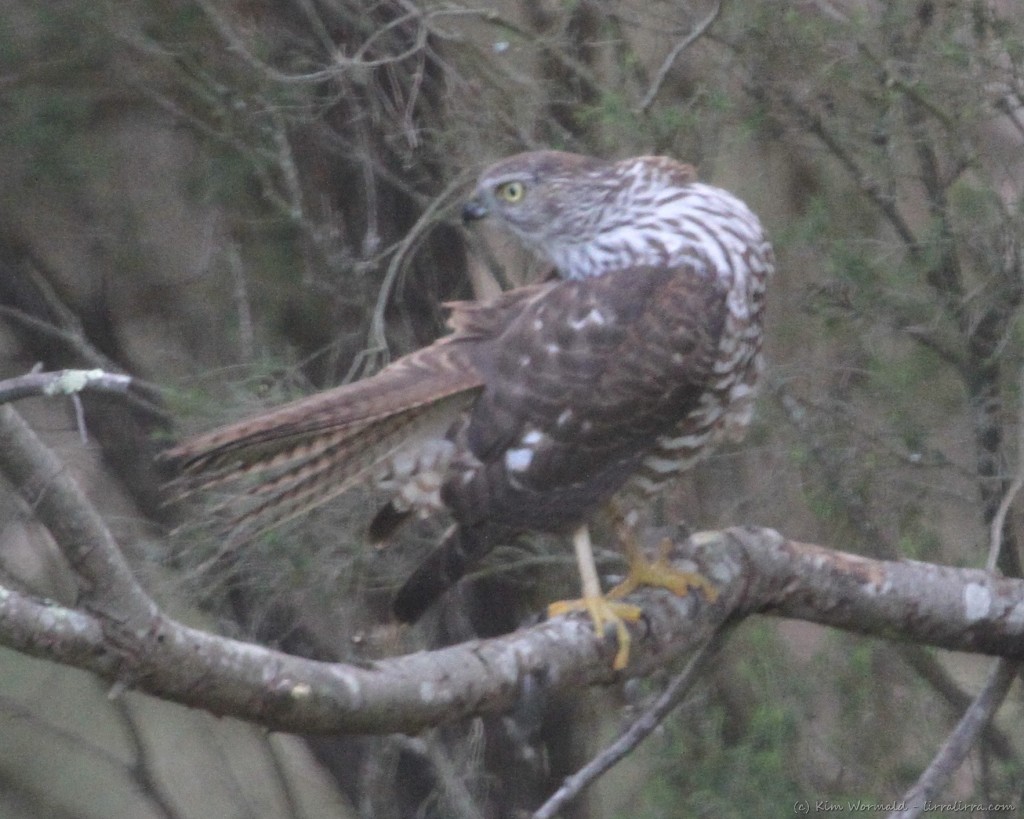

[…] I’ve posted images of Eastern Yellow Robins before, two that I was excited about when I used my camera for the first time (but which I would not post today as the first one is not sharp and the second has an unattractive head angle) in First-day Photos and a graphic series of one being eaten by a juvenile Brown Goshawk in Eastern Yellow Robin for lunch. […]
[…] of a Brown Falcon, Collared Sparrowhawk and Brown Goshawk are posted in Eastern Yellow Robin for Lunch. You might also be interested in Tawny Frogmouth close-ups and Kookaburra sits in the old gum […]
will have to wait for technology to supply the answer – bet its not far off either!
looks fantastic kim, i’ve learned a few more things you forgot to tell me on our outings! would be great if there was a button on the photo to press to hear what they sound like…
I wish I could do that! Best I can manage is to add a link to Birds in Backyards (links page), they have some good audio you might like.
[…] Protected: Eastern Yellow Robin for lunch […]